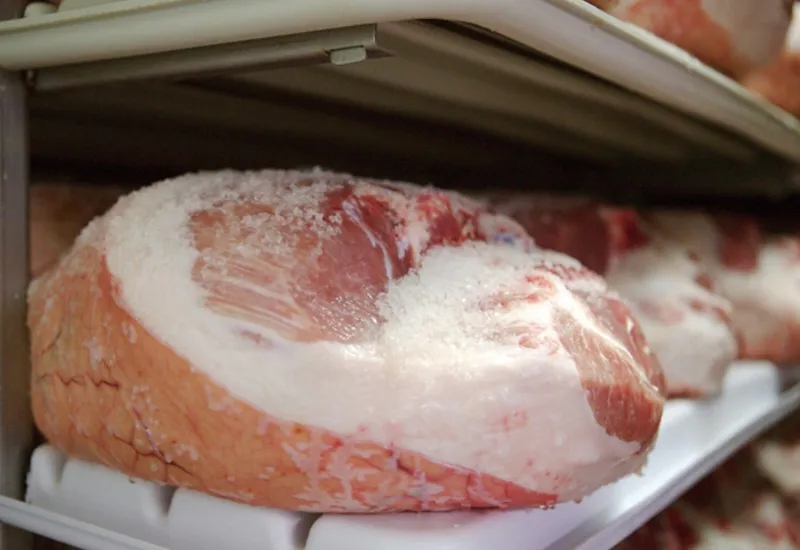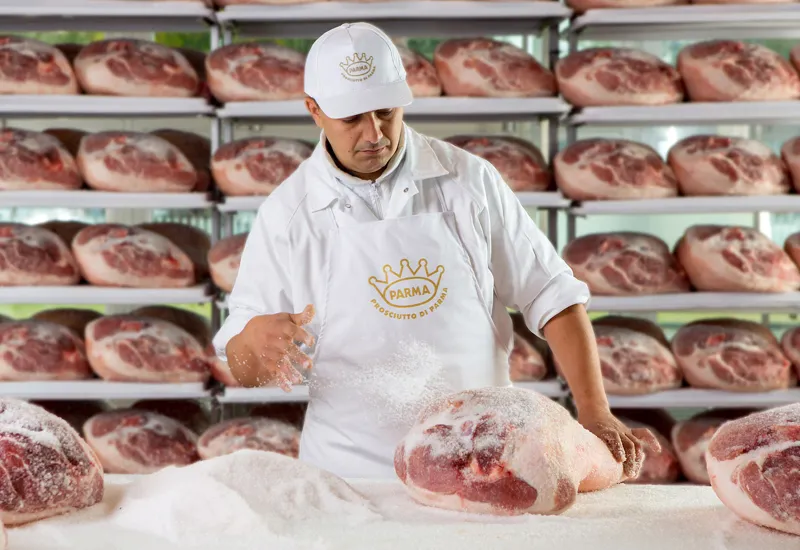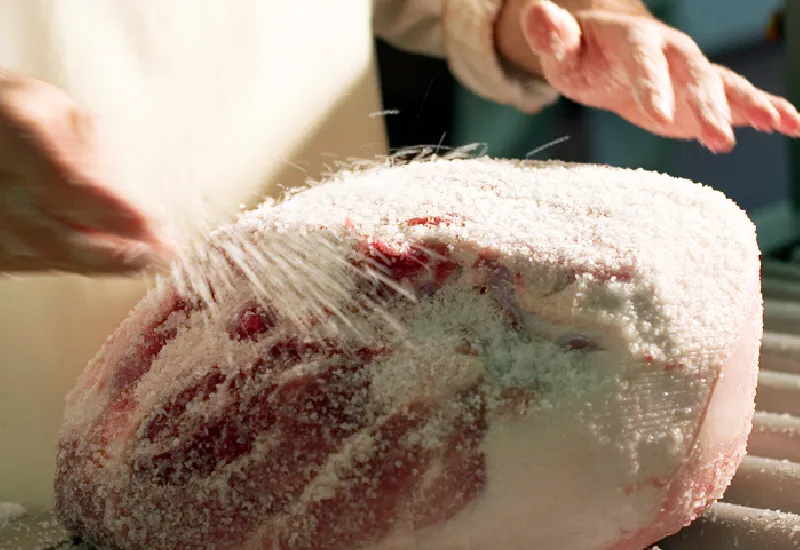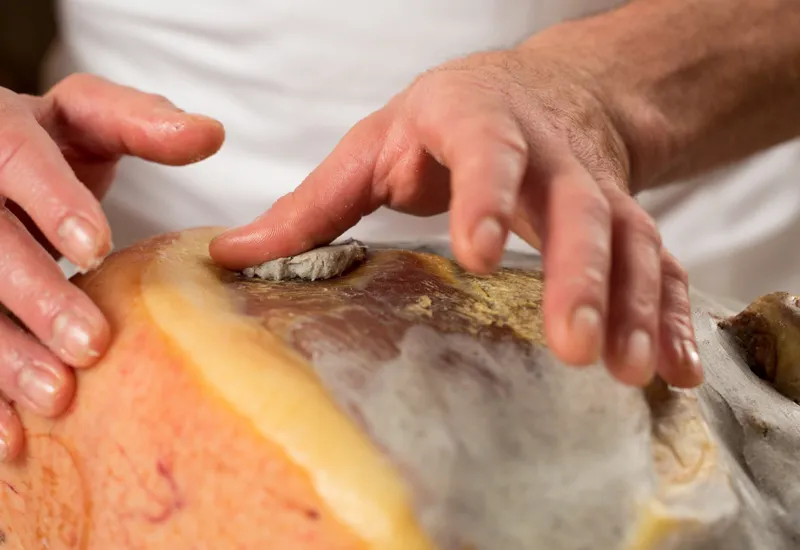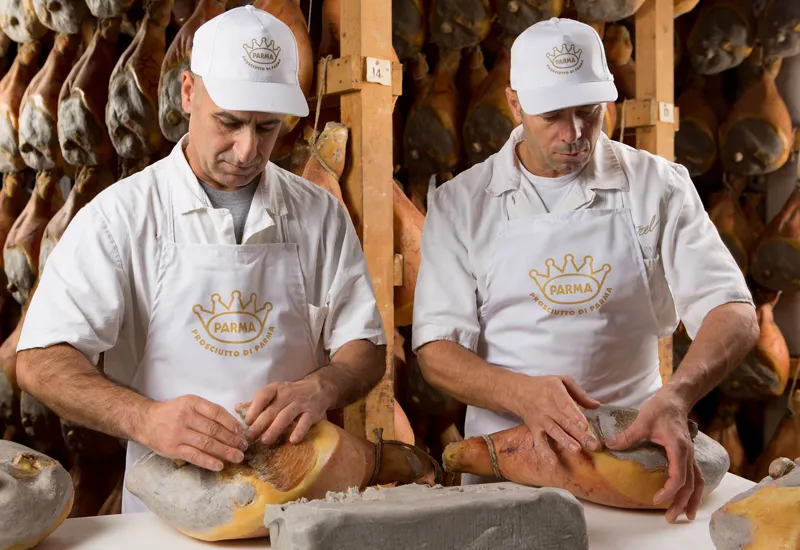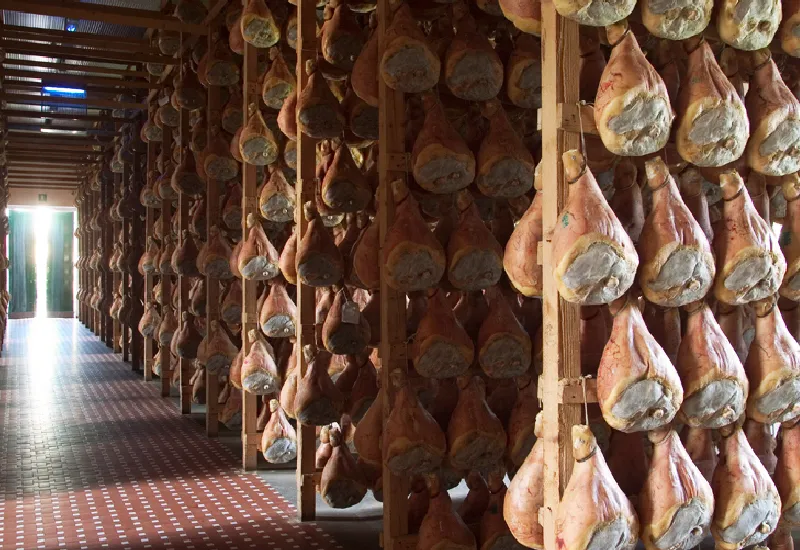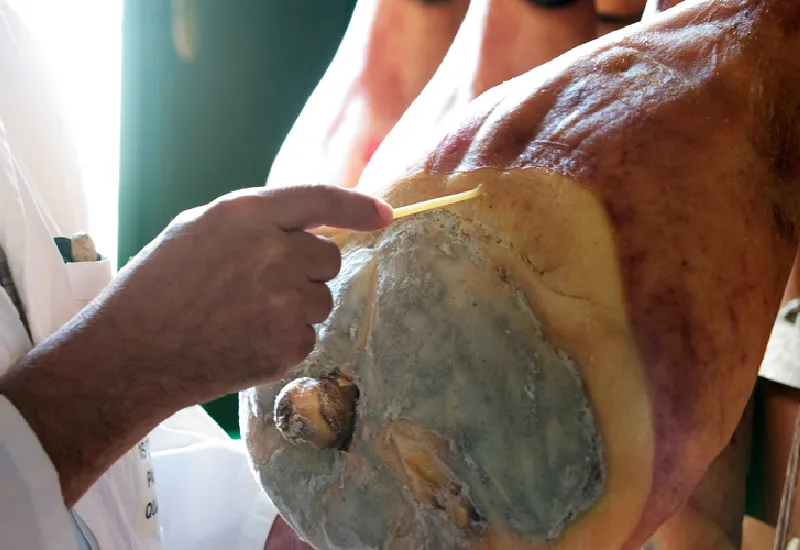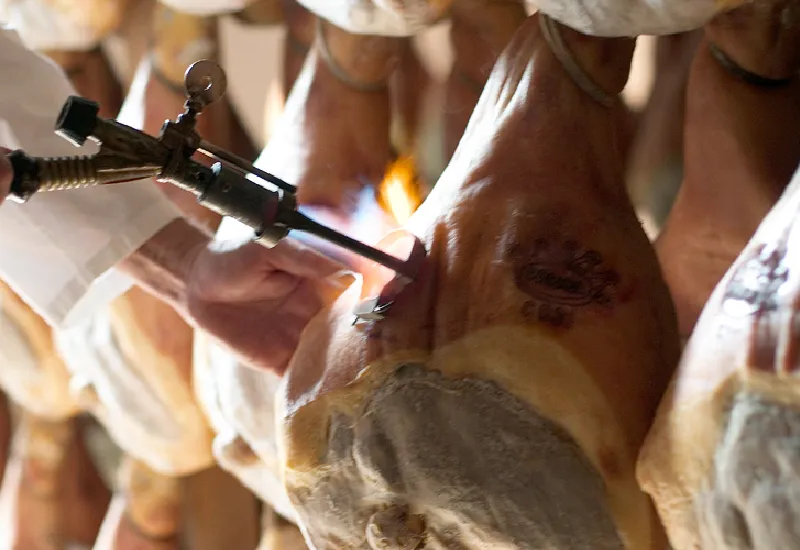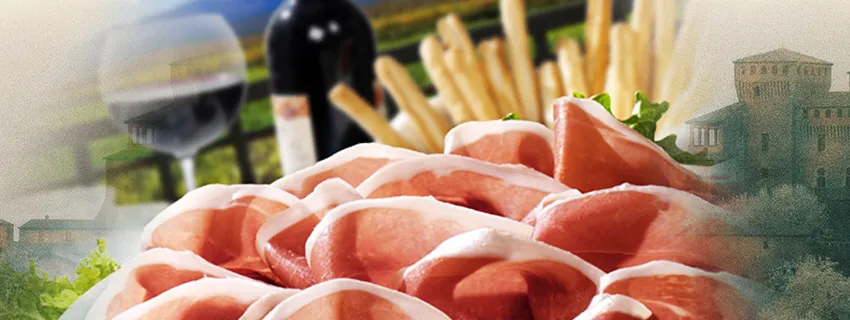Published:
Author: Antonio Maria Guerra
How Is Prosciutto Made?

In this article we will discover how Prosciutto di Parma ham is produced, starting from the breeds of pig used, up to the curing. An artisan process, handed down from generation to generation, thanks to which this excellence of taste is born. Enjoy the reading.

How is Prosciutto made?
Prosciutto di Parma is a kind of ham requiring not only high-quality meat, but also great skill in the different stages of its preparation. The stages are briefly described below (click here to view a printable version):
01. Cooling: The rear thigh of the pig is placed in a cold room at about zero degrees centigrade: this firms up the meat and makes the subsequent trimming much easier.
02. Trimming: Part of the fat and of the rind is removed until the thigh gets a rounded shape (‘chicken leg’): this particular shape simplifies the salting procedure.
03. Salting: The thigh is treated with salt (‘first salt’) and rests for a week in a cold room. Following, it undergoes a new, light pass of salt (‘second salt’) and rests in the cold room for another 15/18 days.
04. Resting: The superficial salt is removed and the thigh stays at rest for 60/80 days in a cell, so as that it can ‘breath’ (the cell undergoes frequent air changes). The absorbed salt penetrates deeply.
05. Washing & drying: Once washed with warm water to remove any impurities, the thigh starts drying in great rooms using as much as possible natural air flows.
06. Initial curing: The thigh starts aging by hanging from the ‘scalere’: wood structures located in large rooms where opposing windows generate natural air flows.
07. Greasing: A mixture of pork fat, salt and pepper is spread over the muscular parts of the thigh that have remained uncovered to prevent them from drying too quickly.
08. Final curing: After their seventh month of life, the thigh is moved to particular cellars known as ‘cantine’ where aging continues.
09. Survey and branding: Twelve months after the beginning of the procedure, the thigh undergo an olfactory examination thanks to targeted punctures performed with a horse bone (the ‘fibula’). If the test is passed, the thigh is branded on fire.
Let’s find out the fascinating origins of Prosciutto di Parma ham, as well as a large number of information and interesting facts. To read the article, please click on this LINK.
How Prosciutto di Parma ham is made? Printable infographic.
Click HERE to view (and, eventually, download) a printable infographic showing the steps necessary to produce Prosciutto di Parma ham.
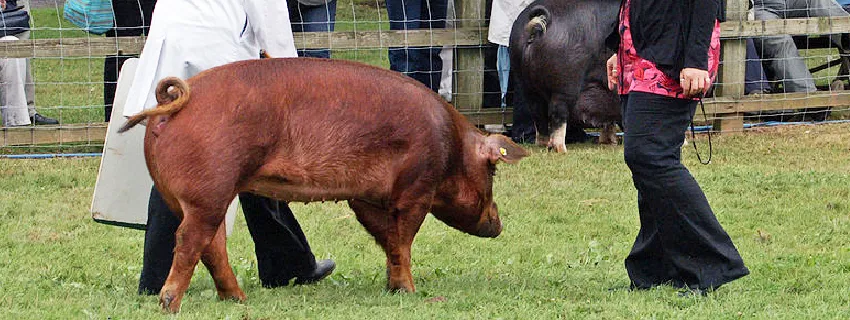
The pigs for Parma harm.
Not all pigs are suitable for producing Prosciutto di Parma ham.
Read more
Those used by the traditional producers of the Consortium must belong to the Large White Landrance or Duroc breeds. The animals must necessarily be fed with quality foods, such as barley, maize and whey coming from the production of Parmigiano Reggiano cheese. Once these pigs have reached at least 9 months of age and a weight of about 160kg, they are finally considered suitable for butchery, beginning the steps needed to make one of the most famous hams in the world.
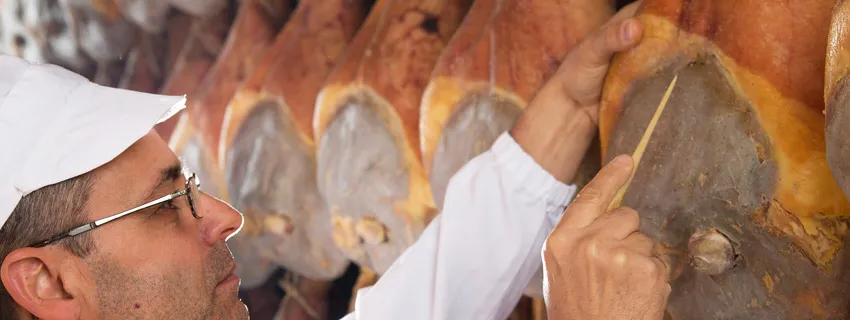
A ‘fibula’ to test prosciutto.
Strange as it may seem, even today, despite the incredible technological development of the modern age, the fundamental tool for testing the real quality of prosciutto is the ‘fibula’.
Read more
It’s a thin needle, made from the bone of a horse’s shin. It’s used by the ‘spillatore’ (or ‘puntatore’) to penetrate the ham thigh in specific points. The horse bone is used for its particular porosity, which captures aromas and then loses them in a short time. Thanks to these aromas, the ‘spillatore’, a professional figure much similar to the sommelier, can evaluate the characteristics of prosciutto, giving a judgment on its evolution.

The Protected Designation of Origin (PDO).
In 1996 the European Union assigned to Prosciutto di Parma the Protected Designation of Origin (P.D.O./D.O.P.): thus recognizing the particular value of this product and its indissoluble bond with the territory of origin.
The PDO implies the legal protection of this ham under the aegis of the Community: to keep this right, the prosciutto must necessarily meet certain requirements, first of all, the geographical origin (*1), listed in a product specification document.
Notes:
*1: The entire production process must take place in the ‘typical area’: a specific, well-delimited place, characterized by particular human and natural factors (such as the mastery of local artisans and the climate).
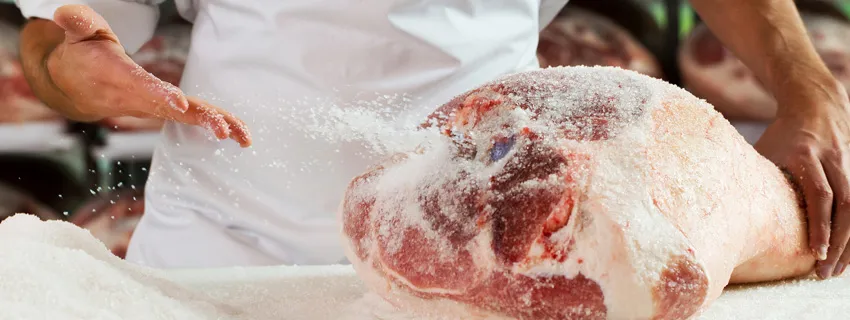
Salt for Prosciutto.
In ancient times salt was so precious that it was often used as a method of payment for Roman legionaries (hence the word ‘salary’ and its Italian translation ‘salario’). This great value was due to its rarity and to the importance of its many, fundamental uses: for example, it was one of the few tools to guarantee the preservation of food.
Read more
Among them, pork. Considering this, it’s probably no coincidence that the famous salt mines of Salsomaggiore are located not far from the production area of Prosciutto di Parma, one of the most traditional Italian hams.

The product specification document for Prosciutto di Parma.
The product specification document of Prosciutto di Parma contains a list of the characteristics that this ham requires to get the Consortium’s quality mark and, consequently, the legal protection guaranteed by the Protected Designation of Origin. These requirements concern, for example:
- The suitable breeds of the pigs;
- The place of origin of the pigs;
- The zones where the meat must be treated;
- The composition of the pig’s diet;
- Physical, chemical and organoleptic characteristics of the finished product;
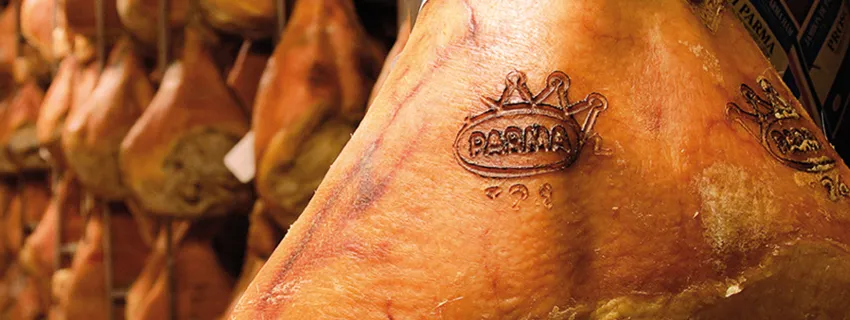
The brand of Parma ham.
One of the elements that make it possible to distinguish Prosciutto di Parma from any other ham is the presence on each thigh of a stamped brand representing a five-pointed crown (the Ducal Crown). This mark is deposited in a great number of countries and is used by the members of the ‘Consorzio’ (the Consortium) to certify the origin of their hams, guaranteeing compliance with the product specification document and thus the quality. Since 1991, in addition to the crown, there is also an identification code allowing to trace the manufacturer of each individual leg.


Consorzio del Prosciutto di Parma: contacts.
Address: Largo Piero Calamandrei, 1/a
43121 Parma (PR)
Official website: www.prosciuttodiparma.com
Mail: info@prosciuttodiparma.com
Tel.: +39 0521 246211
Copyright information.
The images displayed in this page belong to WebFoodCulture and to the Consorzio del Prosciutto di Parma, with the exception of:
Public Domain images:
- PDO Logo (Wikipedia Link)
Creative Commons images:
- A Duroc sow being shown at The Last Royal Show. Image belonging to David Merrett (Wikipedia Link)

